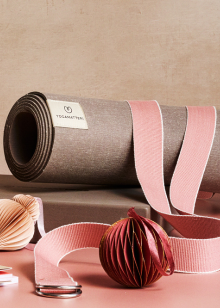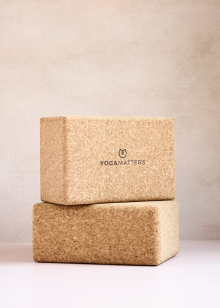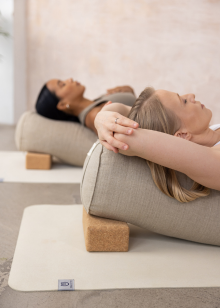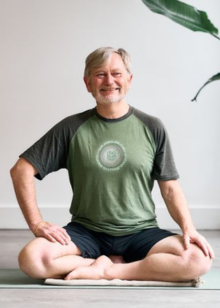If you choose to peek beyond the physical aspect of Yoga, you’ll get a glimpse into the rich and incredibly vast world of Yoga philosophy. Complete with tales of gods and goddesses, symbolism of life and death, battlefields within the mind, and explorations into the meaning of consciousness, the philosophical aspect of this age-old practice had a profound impact on me when I first started studying Yoga. Whilst for some, the Yoga philosophy module on a teacher training is the one they may zone out of (I know many teachers have told me recently they’d love to re-do their philosophy weekend after their understanding of Yoga has evolved over the years), for others, this is the turning point when Yoga becomes so much more than a set of postures.
One of the areas of Yoga philosophy you’re most likely to come across when researching or taking part in a training course, is the notion of ahimsa. The word itself translates as ‘non-harming’ or ‘non-violence’, in thought, word and action. Gandhi was well-known for his devotion to ahimsa, and much of the Hindu and yogic tradition is built upon the foundations of non-harming. Ahimsa is the first of the ‘Yamas’ or ‘moral observances’ within the Eight Limbs of Yoga – a set of almost instructional steps that can help guide a Yoga practitioner towards Samadhi or ‘bliss’. Whilst it’s all very well knowing about the words, translations and meanings of philosophical tenants, the real difference comes when we start putting these practices into action. The Yoga sutras say that ahimsa should form the foundation upon which all other philosophical practices (such as ‘truthfulness’, ‘non-stealing’, ‘right use of energy’, and ‘non-greed’) are built. To put it to the test, let’s see what happens when we take our Yoga off the mat and into everyday life with the practice of ahimsa. Try the following five tips and see what a difference it makes to your week!
Ahimsa in your Yoga practice:
Many of us have been there; we’re edging towards a challenging Yoga posture, about to physically inch deeper or higher than we thought we ever could, and then *ouch*. A hamstring, a rotator cuff, a wrist or your lower back, and a sense of how silly we may have been to push our bodies into a place it wasn’t ready to go. Practicing ‘non-harming’ in your Yoga practice is one of the most noticeable ways to start changing your relationship to your body, and to Yoga itself. When we practice physical asana from a place of ‘non-violence’, our practice is far wiser and sustainable. Before you get moving on your mat, take a moment to tune in and listen to what your body needs that day. Do you usually opt for a strong Ashtanga sequence, but feel as though your joints would benefit from a restorative session today? Do you feel sluggish and heavy, intuitively knowing that your body is craving some dynamic, circulation-boosting movement? When you’re invited to take the more physically ‘advanced’ option in class, notice whether that choice is truly right for you, or whether your ego is simply pushing you into doing it.
Ahimsa in your relationships:
Being stuck in a lockdown situation in the UK for months and months, means things can feel a little intense at home sometimes. If you and your partner have been together a lot more than usual this past year or so, notice whether you’ve started snapping at each other or taking each other for granted. At this time, what we need is space, so make sure you’re getting enough. If you’re both working from home, spend some time in separate rooms, and consider whether you want to go for your daily walk together or alone. At the other end of the spectrum, it’s important to create some dedicated time to spend together that still feels special. Can you cook a meal together? Watch a favourite film? Or simply sit and chat without any distractions over a cup of tea on a rainy afternoon?
Ahimsa at work:
Working from home means the boundaries between what work and leisure look like can become all too blurred. If you notice you’ve been checking and answering your emails at times you’d never dreamt of doing a few months ago, this is a good time to reflect and re-set where your work / home boundaries need to be set. Whilst we all need to support each other right now (which may indeed require a little overtime or multiple zoom conferences each day), it’s also more important than ever to recognise when our sacred personal time is being taken over. Try to stick to work hours, switch your email and phone notifications off when you’re not working, and take a breath before answering that email in an angry tone you might regret!
Ahimsa in your diet:
One of the most controversial topics that tends to come up on Yoga teacher trainings, is the concept of ‘non-violence’ in diet, and whether every yogi should be a vegan. Whilst many Indian diets are vegetarian, there is also a large consumption of fish in parts of South India, and a huge amount of emphasis placed upon the importance of ghee and dairy across the whole of India, and the yogic tradition. The most important thing to consider when it comes to practicing ahimsa in alignment with your diet, is that you eat what your body personally needs and enjoys, whilst also being mindful about where your food has come from, and the treatment any animal products may have had. What one person’s body benefits from is totally different to someone else’s, so as well as listening to what we truly need, eating as seasonally and locally as possible, we can also practice ahimsa in diet by being non-judgemental about other people’s choices.
Ahimsa in your mind:
Would you speak to your best friend the way you speak to yourself? If the answer is “of course not!”, then your next step on the yogic path is to start practicing ahimsa with the words you speak to yourself. Our minds can easily be our best friends or our worst enemies at times, and this can all have a strong impact on our emotions and mental health. Practice simply observing your thoughts without getting caught up in them at all. Watch them like clouds passing by, and consider whether you want to hold those thoughts in your mind, whether you would say those words to anyone else, and how much they could be harming you. You deserve to hear words of honesty, and words that align with your true self, so if you catch your mind starting to rant negatively about yourself, physically stop and say to yourself “Enough”, which can effectively break the pattern of damaging self-talk.














